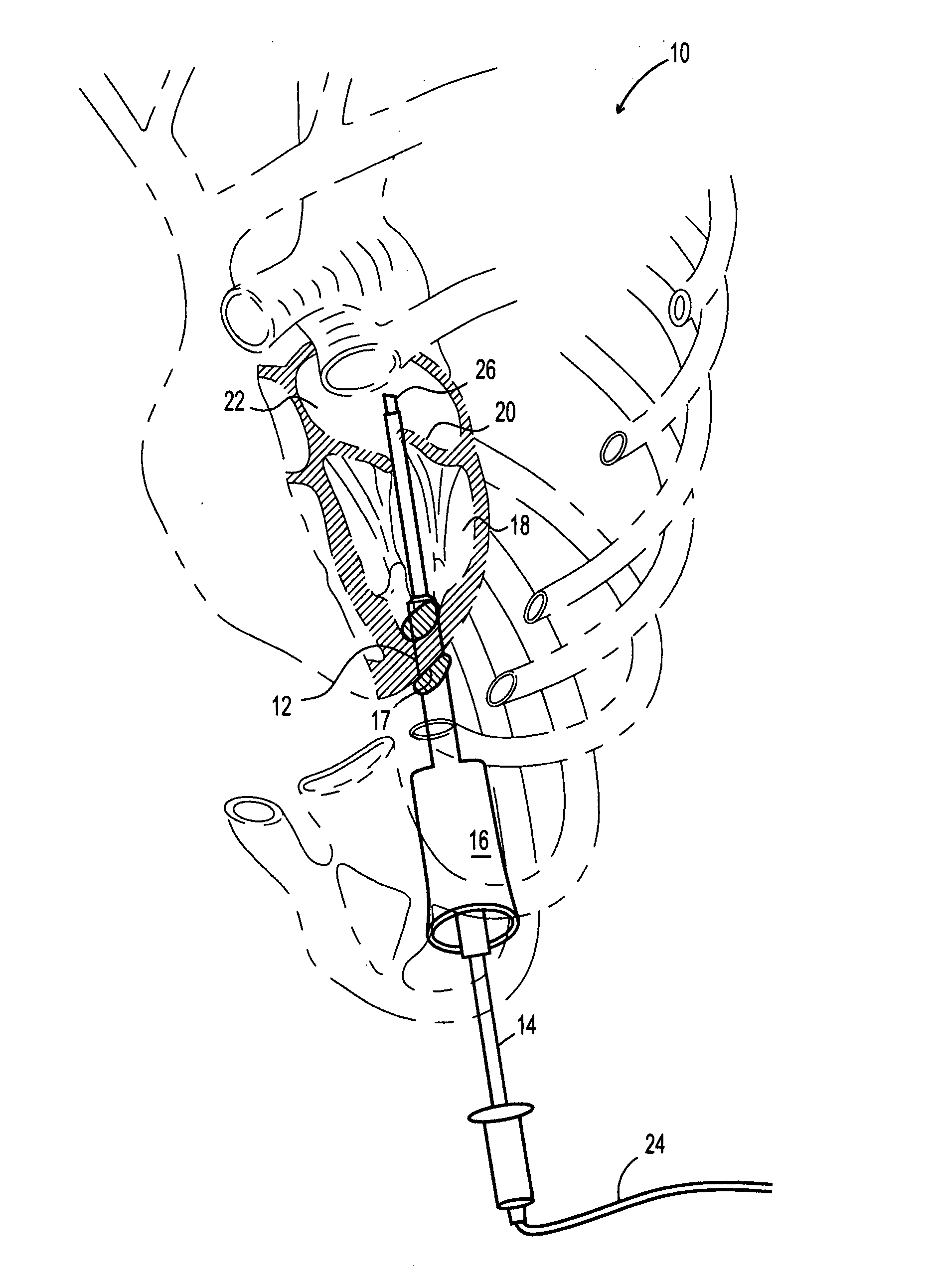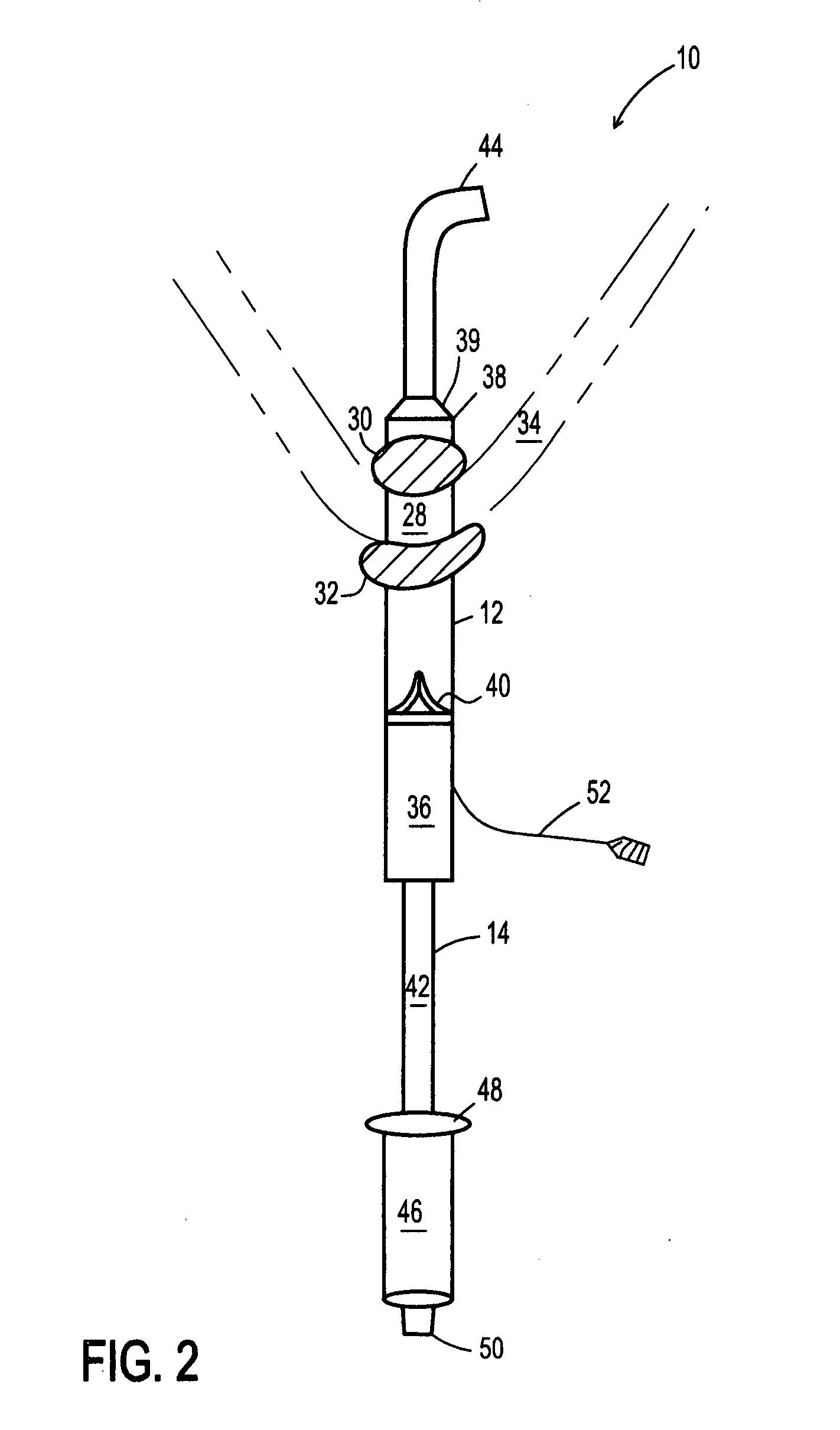Methods and devices for endocardiac access
- Summary
- Abstract
- Description
- Claims
- Application Information
AI Technical Summary
Benefits of technology
Problems solved by technology
Method used
Image
Examples
Embodiment Construction
[0029] The devices are an instrument port and an instrument guide, which can be used in combination or separately. The devices allow a physician to gain access to the interior of the heart, in a minimally invasive manner, so that he or she can perform a medical procedure therein. The instrument port is designed to be temporarily implanted through the heart wall and designed so that the instrument guide can pass through the port and into a heart chamber. The instrument guide is designed to be inserted through the instrument port and provide guidance to an instrument inserted through the guide into a chamber of the heart.
[0030]FIG. 1 illustrates the devices as used together as an instrument delivery system 10 in a human body to deliver an ablation catheter into the left atrium. The instrument port 12 is implanted at the apex 17 of the left ventricle. Instrument guide 14 is inserted through chest trocar 16, through the instrument port 12, into the left ventricle 18, past the mitral va...
PUM
 Login to View More
Login to View More Abstract
Description
Claims
Application Information
 Login to View More
Login to View More - R&D
- Intellectual Property
- Life Sciences
- Materials
- Tech Scout
- Unparalleled Data Quality
- Higher Quality Content
- 60% Fewer Hallucinations
Browse by: Latest US Patents, China's latest patents, Technical Efficacy Thesaurus, Application Domain, Technology Topic, Popular Technical Reports.
© 2025 PatSnap. All rights reserved.Legal|Privacy policy|Modern Slavery Act Transparency Statement|Sitemap|About US| Contact US: help@patsnap.com



